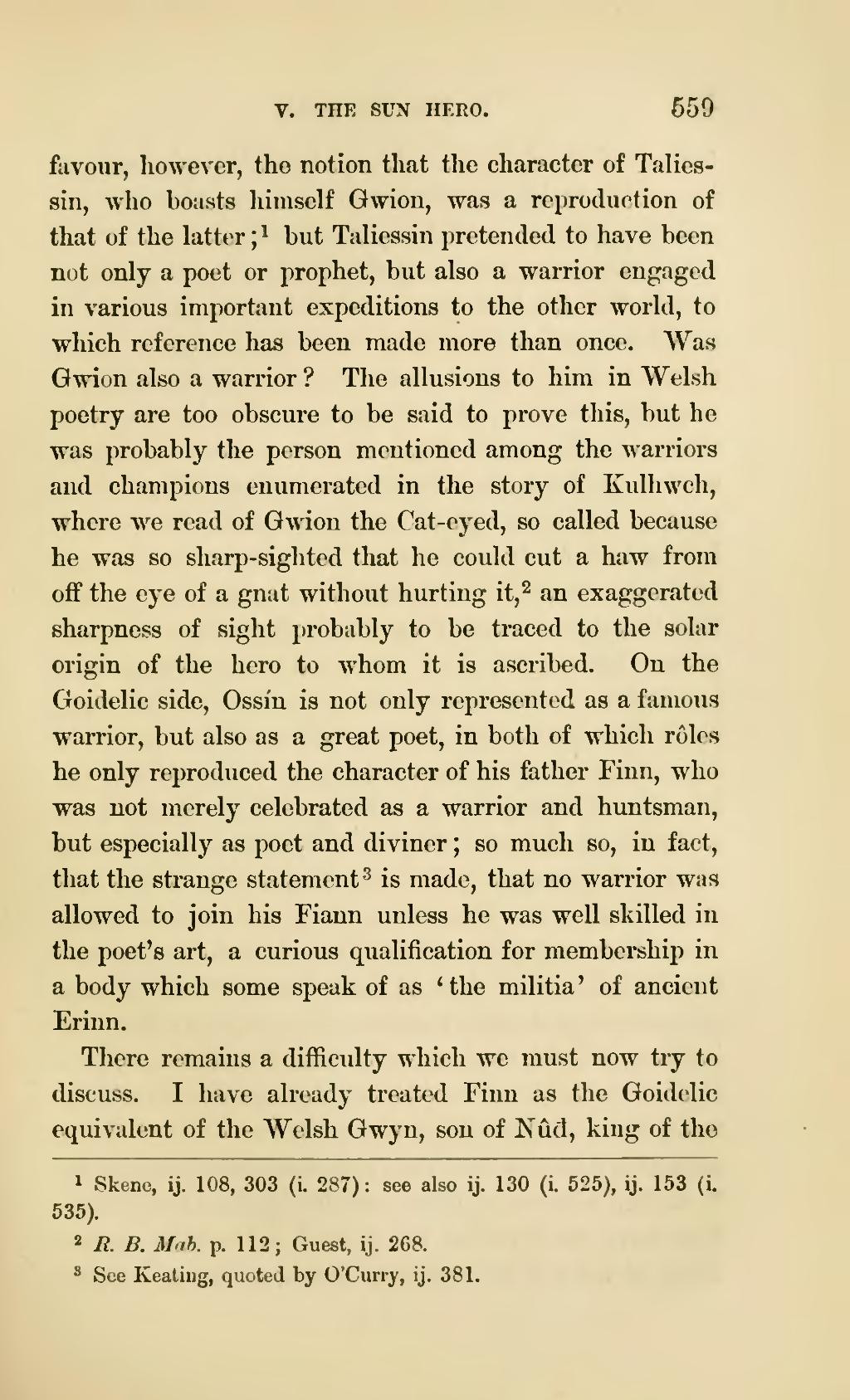favour, however, tho notion that the character of Taliessin, who boasts himself Gwion, was a reproduction of that of the latter;[1] but Taliessin pretended to have been not only a poet or prophet, but also a warrior engaged in various important expeditions to the other world, to which reference has been made more than once. Was Gwion also a warrior? The allusions to him in Welsh poetry are too obscure to be said to prove this, but he was probably the person mentioned among the warriors and champions enumerated in the story of Kulhwch, where we read of Gwion the Cat-eyed, so called because he was so sharp-sighted that he could cut a haw from off the eye of a gnat without hurting it,[2] an exaggerated sharpness of sight probably to be traced to the solar origin of the hero to whom it is ascribed. On the Goidelic side, Ossín is not only represented as a famous warrior, but also as a great poet, in both of which roles he only reproduced the character of his father Finn, who was not merely celebrated as a warrior and huntsman, but especially as poet and diviner; so much so, in fact, that the strange statement[3] is made, that no warrior was allowed to join his Fiann unless he was well skilled in the poet's art, a curious qualification for membership in a body which some speak of as 'the militia' of ancient Erinn.
There remains a difficulty which we must now try to discuss. I have already treated Finn as the Goidelic equivalent of the Welsh Gwyn, son of Nûᵭ, king of the
